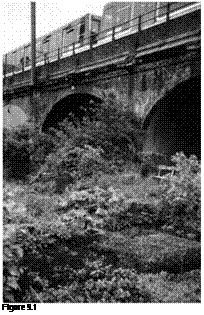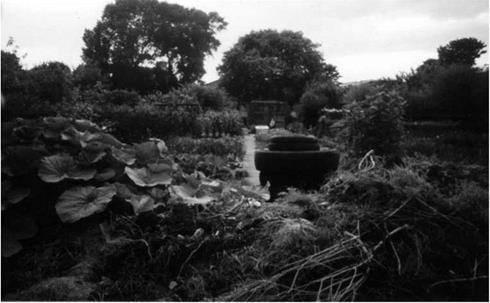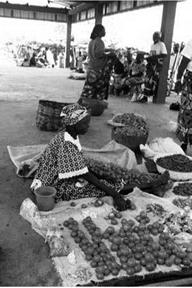The macro-economic effects of UPA are improved food security and lower food prices, some employment, and contributions to related industries. Although the empirical evidence for these effects is patchy, there is strong anecdotal evidence to support them.
There are demand-led opportunities for urban agriculture and horticulture specialising in niche and other products, such as highly perishable produce, specialised livestock and fish, in cities where UPA is underdeveloped (Garnett, 1999). The demand-led opportunities need to be matched, however, by supply-led growth in more deprived areas, to encourage equity of access and affordability between different social groups.
Local food purchasing policies in the statutory sector (hospitals, prisons, schools, etc.) could provide a major impetus to the development of UPA given that a large proportion of all food consumed is through this sector. Price and/or quality advantages would be needed to enable justification by the relevant authorities.
The provision and reasonable pricing of land and water resources is essential to develop UPA in the city. Within a supportive framework, policies are needed to protect and improve the security of land tenure for urban farmers. In the UK, this could take the form of amending planning policy guidance (PPG) relating to allotments, fringe farms, and other urban spaces used for food production.
Planning regulations and guidance should take into account the needs of urban farmers to invest in refurbishing facilities, or in new ones, to develop processing, storage, and packaging facilities, thus enabling them to ‘add value’ to their products and improve their turnover and incomes.
As with other industries, UPA is dependent upon the city’s infrastructure including the transport system, public utilities such as water management systems, and other services including labour and produce markets. Such infrastructure, if it does not exist, may be expensive to provide and maintain. Policies should be developed to encourage small – scale, inexpensive systems designed to address the most critical weaknesses in a city’s capital. With relatively little investment, such systems can greatly increase urban farmers’ productivity and viability.
Regional, national, and international policy changes are needed to overcome structural barriers and distorted markets in the urban food supply system. Potential new entrants operating sustainable modes of production would be encouraged by the internalisation of the external economic costs and benefits. Appropriate standards, incentives, subsidy, taxes, and regulations could be used to internalise external
Figure 9.1 An allotment alongside a railway viaduct In London. Land adjacent to railways often provides a con – tinous network of open space, which could be connected into CPULs.
costs and benefits and shift profitability in favour of sustainable practices and encourage a thriving local food industry within and around towns and cities. For example, a tax on aviation fuel would help reflect its real economic cost to society and give produce
grown closer to home an advantage, whilst a subsidy for organic production would reduce the external economic costs incurred by water companies and their customers, caused by having to cleanse water of pesticides and artificial fertilisers.
Case Study 9.1 City Harvest project in London, UK
 Sustain, an alliance of a number of public interest organisations in the UK, initiated the City Harvest project in 1998 to examine the nature of UPA in London, and to encourage its residents to grow food. The project followed from the Growing Food in Cities project which looked at the benefits of urban agriculture in the UK. City Harvest organised a local food festival to celebrate the range, quality, and diversity of food grown in or near London and researched the existing aspects of urban agriculture, and its potential to contribute to the food security and sustainability of London in the future.
Sustain, an alliance of a number of public interest organisations in the UK, initiated the City Harvest project in 1998 to examine the nature of UPA in London, and to encourage its residents to grow food. The project followed from the Growing Food in Cities project which looked at the benefits of urban agriculture in the UK. City Harvest organised a local food festival to celebrate the range, quality, and diversity of food grown in or near London and researched the existing aspects of urban agriculture, and its potential to contribute to the food security and sustainability of London in the future.
The study found that London’s ‘ecological footprint’ is estimated to be 125 times the capital’s surface area with food accounting for around 40 per cent of this. London’s residents, visitors and workers, consume 2.4 million tonnes of food and produce 883 000 tonnes of organic waste per year. The food industry makes a significant contribution to London’s GDP (about $122 billion) with around 11 per cent of all jobs found in the food sector, although most of the food consumed comes from rural districts and other countries.
Almost 10 per cent of Greater London’s area is farm land, of which 500 hectares are under fruit and vegetable cultivation, and there are around 30 000 active allotment holders and an estimated 1000 beekeepers. Overall, the area under commercial cultivation is continuing to decline due to development pressures, labour scarcity/high wage costs, a skewed system of Common Agricultural Policy subsidies, competition from imports, and planning restrictions. The main area for commercial cultivation is the Lea Valley region in North East London.
Figure 9.2 A typical allotment site in England.
|
The Lea Valley region typifies a declining industrialised horticulture. This once thriving area for food production has shrunk since the war and the industry now only covers an area of 120 hectares under glass. It has a high productivity, with 200 or so horticultural enterprises ranging in size from less than an acre to 20 acres, with production often automated and hydroponic. The enterprises sell produce nationally to wholesalers and supermarkets.
The remnants of commercial urban agriculture in London, such as the Lea Valley example, provide an opportunity to redevelop, modify, and diversify the industry towards a more sustainable system.
Conversion to organic, development of sustainable, social enterprises, and production for local London markets, such as farmer’s markets, restaurants, and co-ops, would utilise the existing infrastructure and change the mode of production. Barriers would have to be overcome to enable this, such as encouraging organic horticultural production through the CAP and government programmes, changing planning policy to discourage inappropriate developments on the urban fringe whilst allowing fragmentation of farms to create smaller, more diverse holdings, and internalising the external costs so food prices reflect their true cost and make the sale of produce at local markets preferable.
|
|
|
|
|
|
|
|
|
|





